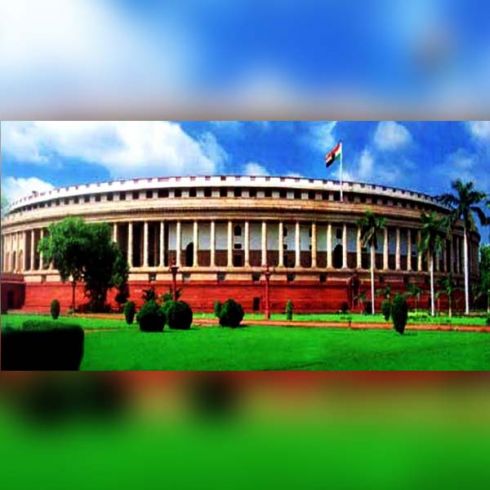
NEW DELHI: The clearance process needs to be simplified to attract more proposals for setting up of community radio stations and the Information and Broadcasting Ministry should focus on hilly and tribal areas, Left Wing Extremist (LWE) Affected Areas, the north east and union territories and other backward, rural and remote areas.
The Parliamentary Standing Committee on Information Technology which also examines issues relating to Information and Broadcasting Ministry has also asked the Ministry to conduct regular training programmes for local folk so that CRS “actualizes its aim of becoming people’s radio in true sense of the term.
The Committee, which said it wanted to be informed of the action taken thereon to strengthen the Community Radio Movement in India, also said it was concerned to find that only Rs 8.9 million was spent of the allocation of Rs 40 million made at the budget estimate stage for 2016-17 which had been reduced to Rs 36.3 million at the revised estimates stage.
Explaining the under-utilization of funds included, the Ministry said only 10 stations purchased equipment and submitted their bills for release of grants and funds kept for innovation grants out of 45 stations which were issued in-principle approvals for grants for purchasing equipment. But this money could not be released as no proposal was approved for release of grant.
It was also submitted that the National Sammelan and Regional Sammelans of operational Community Radio Stations could not be organized during 2016-17.
The Ministry have also informed that though 540 permissions have been issued, only 202 organizations have launched their stations and 11 new Community Radio Stations have been operationalised so far in the year 2016-17.
The Committee noted that the Government introduced the policy guidelines for permitting Community Radio Stations (CRS) in the year 2002 and initially only educational institutions were allowed to operate the CRS. These guidelines were revised in the year 2006 to broaden the eligibility criteria and allow community based organizations, including civil societies and voluntary organizations, State Agriculture Universities, etc., to operate CRS.
The Ministry, which is popularizing the CRS through the Scheme of Supporting Community Radio Movement in India, claimed that the permission process has been simplified to reduce the time taken for issuing permissions.
The Ministry is also facilitating applicant organizations to submit online applications in the Wireless Planning and Coordination Wing (WPC) of the Department of Telecommunication for frequency allocation and Standing Advisory Committee on Frequency Allocation (SACFA) clearance. The grant size for purchasing equipment has been increased from 50% to 75% (90% for the north east) and process for release of grants has been simplified. Grants for content creation have also been introduced.
The duration of advertisements on Community Radio Stations has been increased from 5 minutes to 7 minutes, the Ministry said.
But the Committee said it was “disquieting to note that complexity in obtaining clearances after receipt of permissions from the Ministry is a major factor for low strike rate” of launching of new stations compared to the total number of permissions.
The Committee was told that the recommendations made by the Telecom Regulatory Authority of India in 2014 were considered by an Inter-Ministerial Committee (IMC) constituted for the purpose.
On the basis of TRAI’s recommendations, the Ministry made amendments in policy guidelines for setting up of CRS in India on 19 January 2017.
CRSs should be allowed to broadcast news and current affairs content, sourced exclusively from All India Radio in its original form or translated into the local language/ dialect. It will be the responsibility of the CRS permission holder to ensure that the news is not distorted during translation. However, certain subjects of local relevance were kept out of the purview and CRS could broadcast news about those.
To encourage self-sustainability and enhance the CRSs’ relevance to the community, the stipulation that Directorate of Advertising and Visual Publicity approved rates are their lowest rates and exclusive to DAVP and cannot be offered to any other agency should be relaxed in the case of CRSs.
The National Disaster Management Association in consultation with the Ministry and the Wireless Planning and Coordination Wing (WPC) of the Department of Telecommunication will establish detailed guidelines for use of CRSs in disaster management operations. The guidelines should include the procedure to be followed in case relocation of an existing CRS is required or for the establishment of a new CRS in the disaster affected region.
The Ministry is in consultation with the WPC to simplify the license process and set up a single window system.
The Committee also noted that the Scheme has not picked up in the north eastern states and in most of the union territories for setting up of CRS despite the Ministry holding awareness workshops in these areas.
Permissions to set up community radio stations have been issued in Arunachal Pradesh, Manipur, Nagaland, Sikkim, Tripura and Andaman and Nicobar Islands but no station has become operational so far as permission holders are at various stages to start broadcasting.
S. N. | State/UT | Permissions Issued | GOPA signed | Operational CRS |
|---|---|---|---|---|
1 | Arunachal Pradesh | 3 | Nil | Nil |
2 | Goa | 1 | Nil | Nil |
3 | Manipur | 8 | 2 | Nil |
4 | Meghalaya | Nil | Nil | Nil |
5 | Mizoram | Nil | Nil | Nil |
6 | Nagaland | 3 | Nil | Nil |
7 | Sikkim | 3 | Nil | Nil |
8 | Tripura | 3 | 2 | Nil |
9 | Andaman and Nicobar Islands | 1 | Nil | Nil |
10 | Dadra and Nagar Haveli | Nil | Nil | Nil |
11 | Daman and Diu | Nil | Nil | Nil |
12 | Lakshadweep | Nil | Nil | Nil |